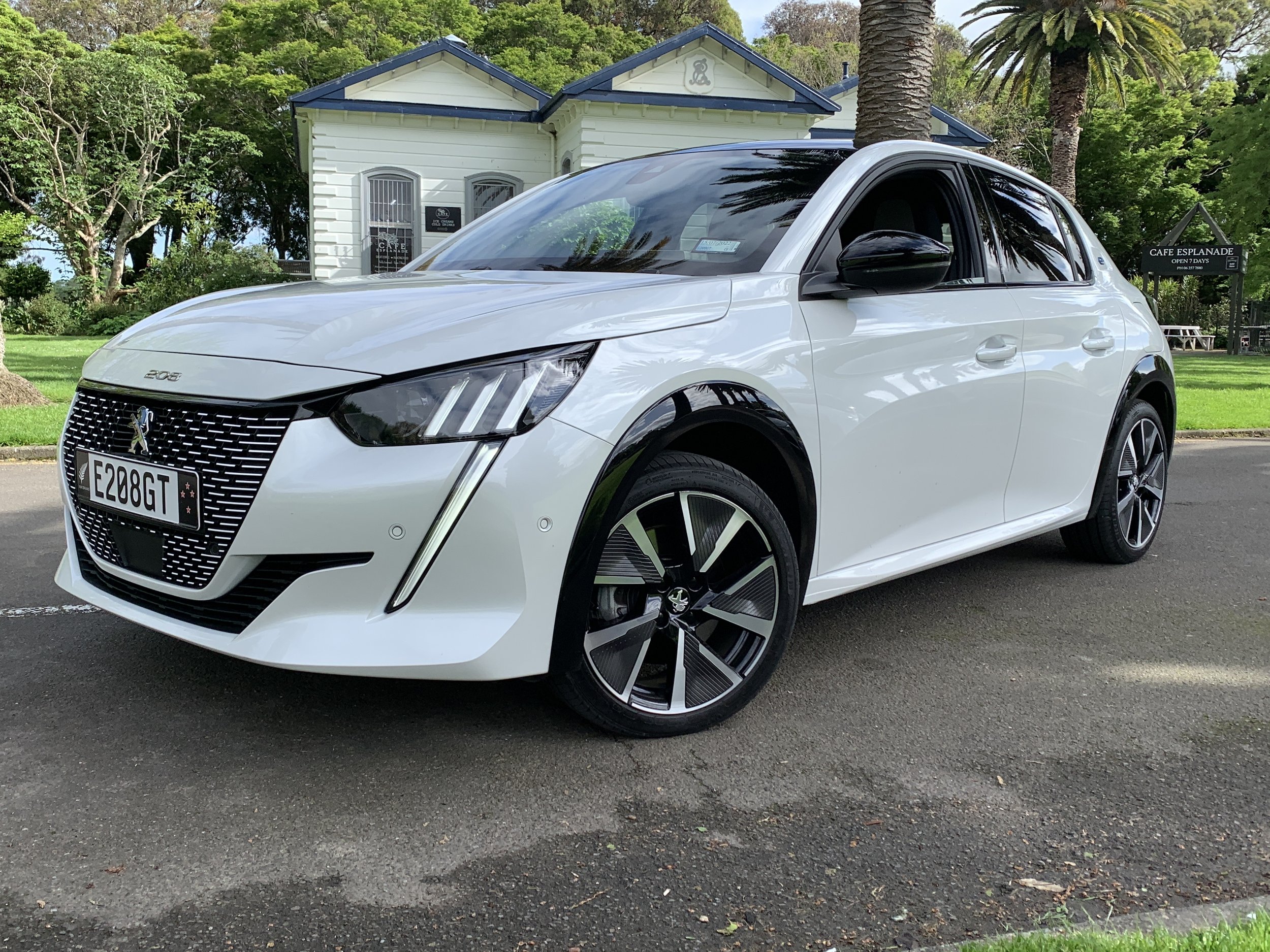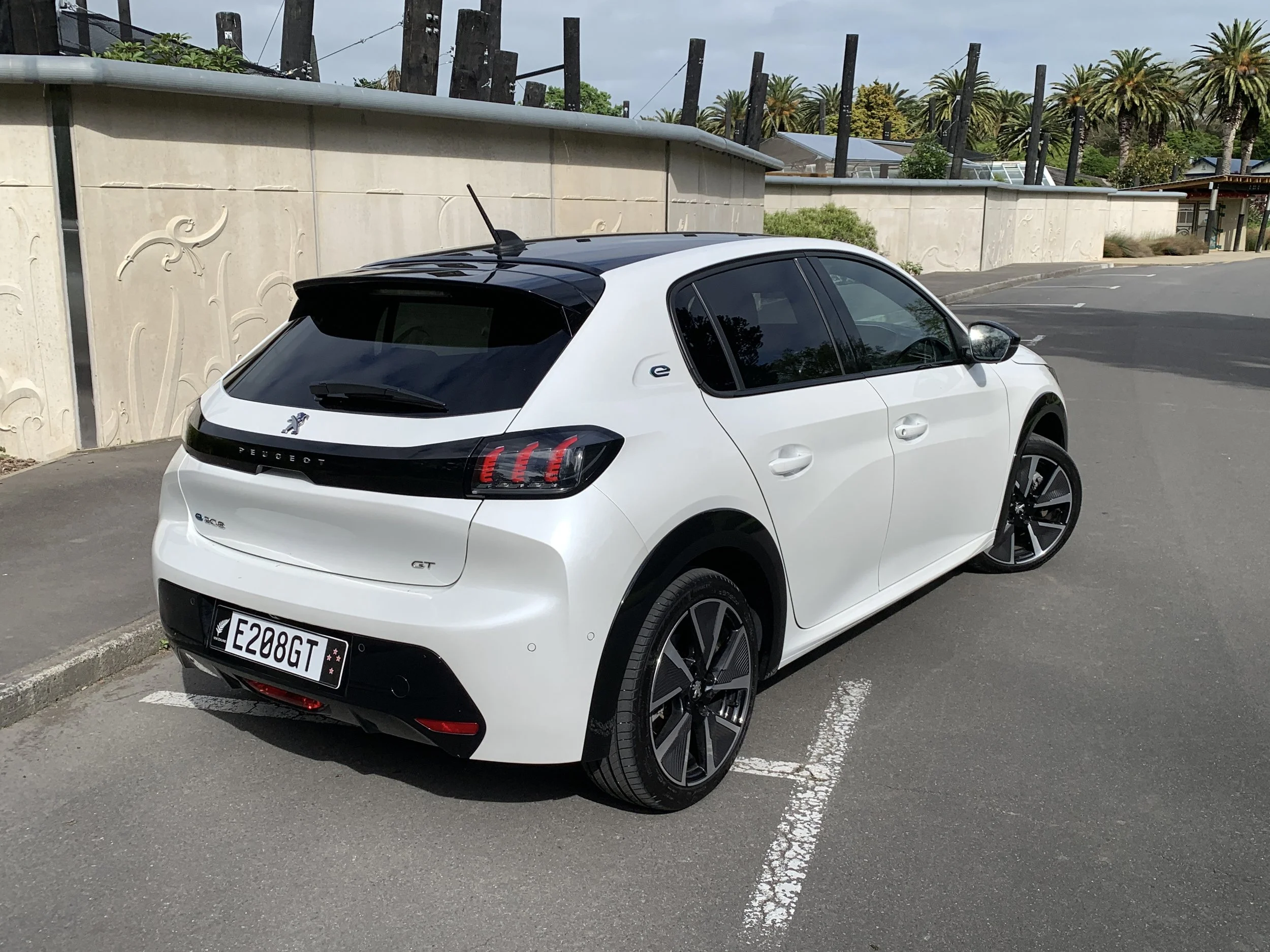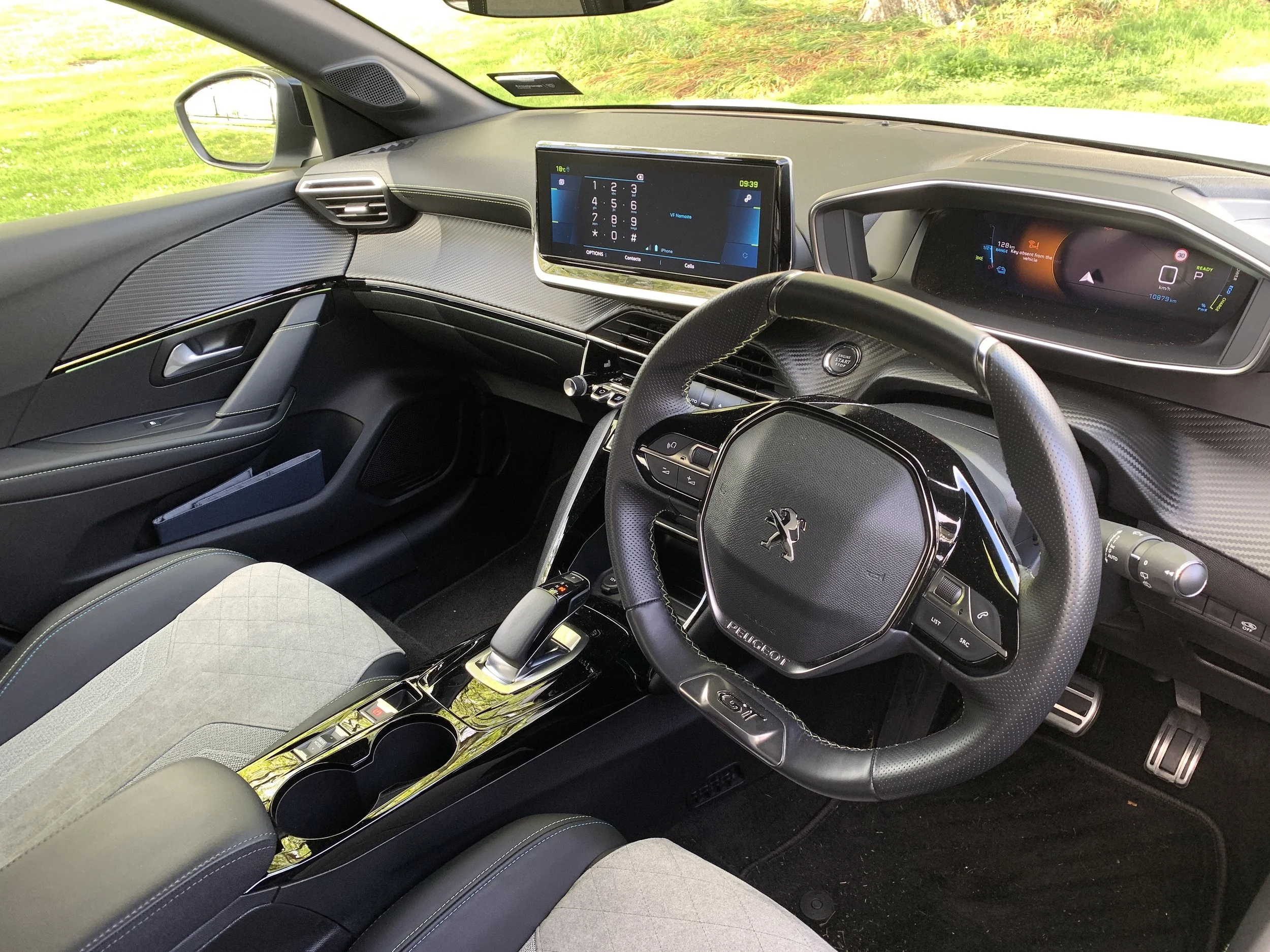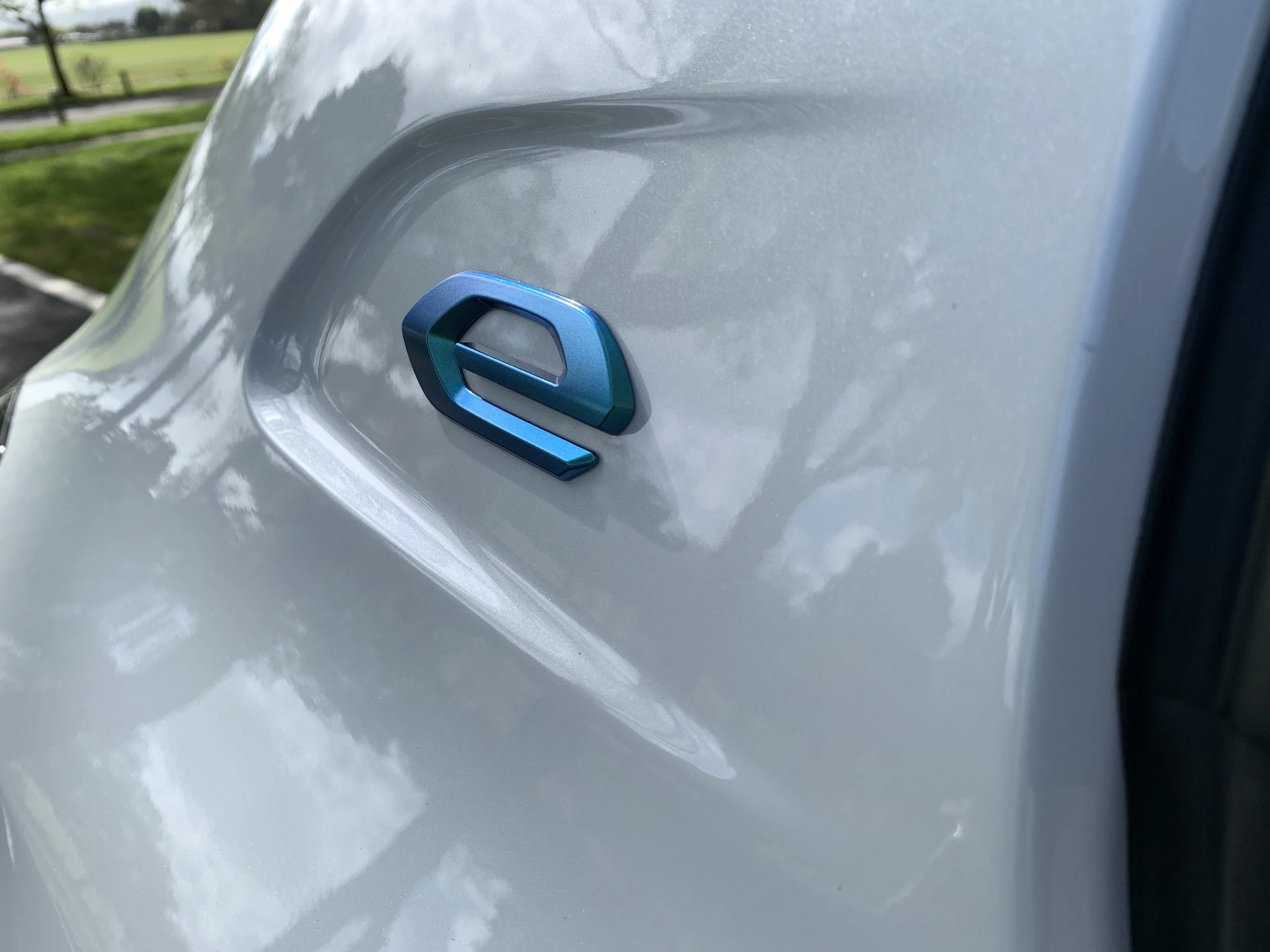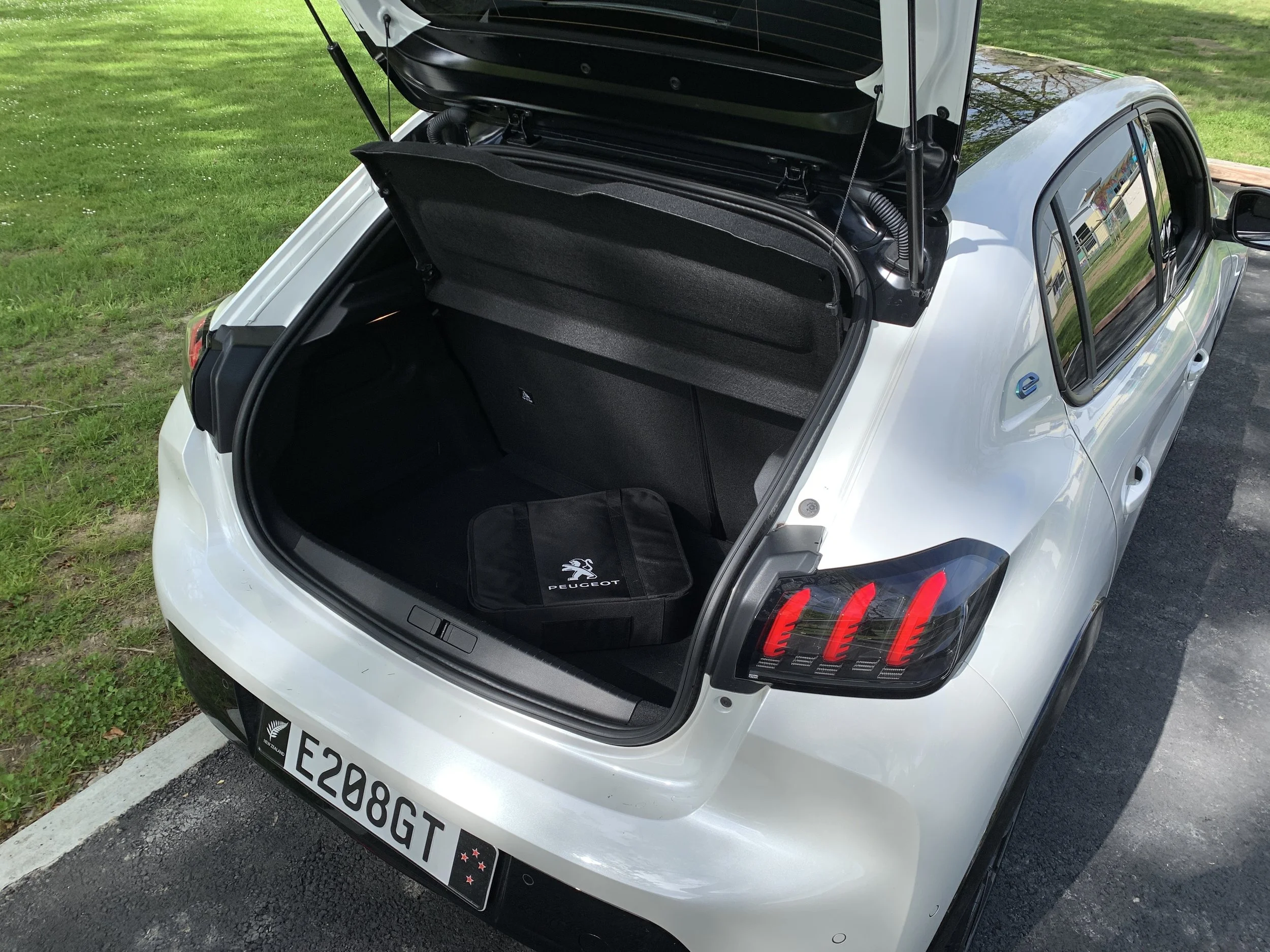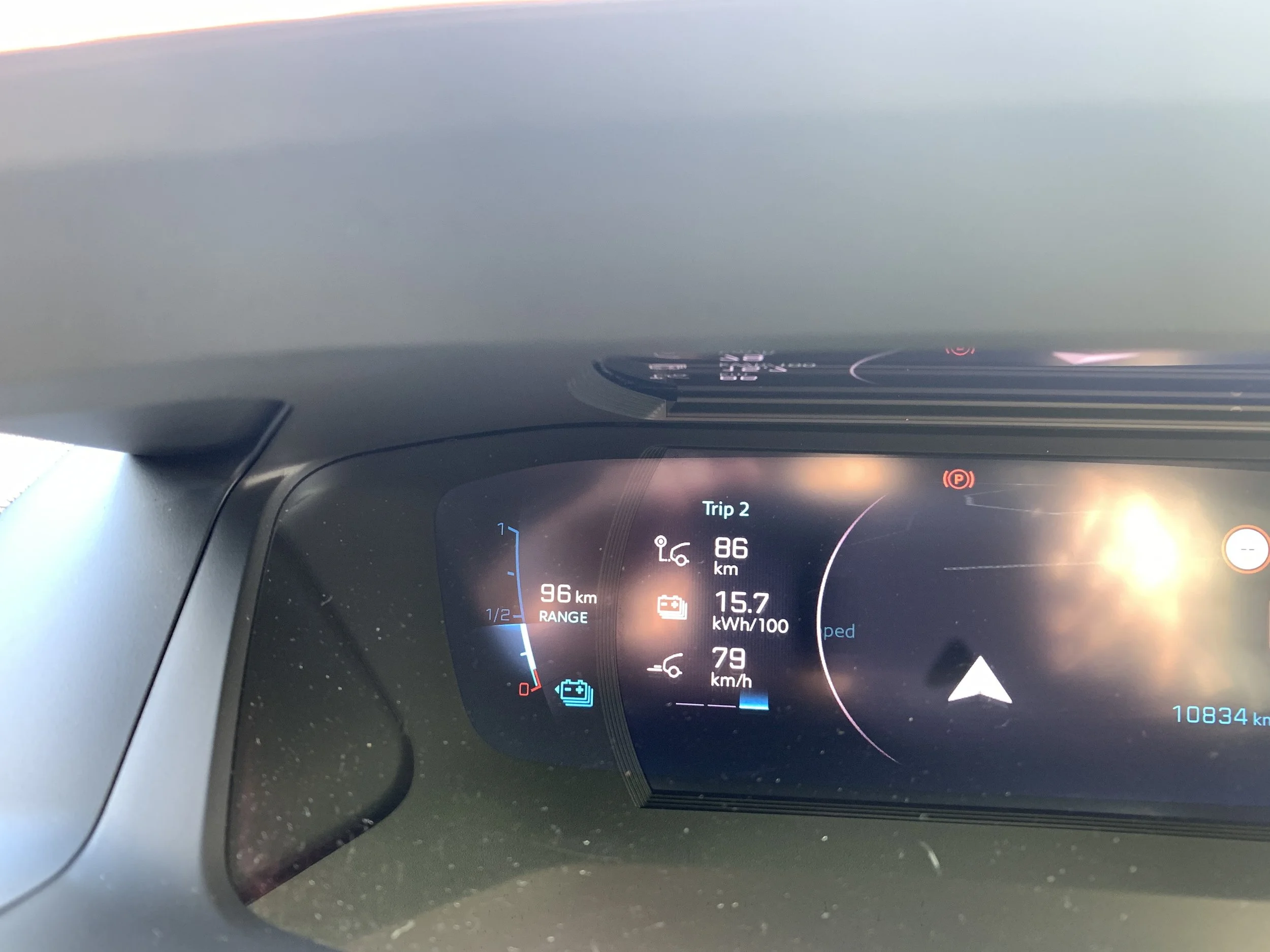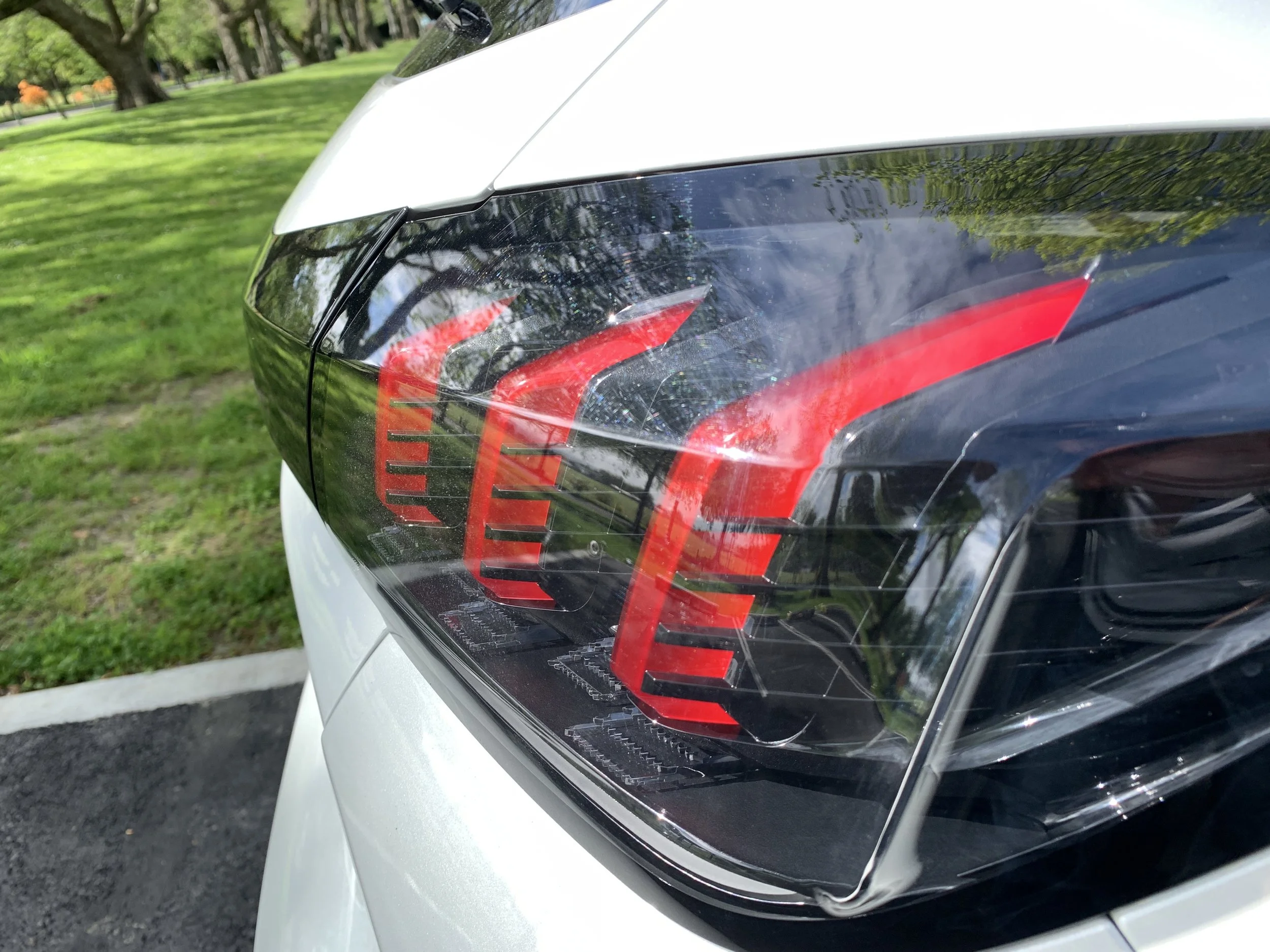Peugeot e-208 GT review: Watt’s up from France?
/An electric supermini with authentic Euro genes presents an interesting concoct, oui?
Price as tested: $59,990 ($51,365 with rebate)
Powertrain: Single permanent magnet synchronous electric motor and a 50kWh lithium ion battery, 101kW/360Nm, 16.9kWh consumption, single speed transmission, front wheel drive.
Length 4055mm, width 1745mm, height 1430mm, wheelbase 2540mm, luggage capacity 265 litres
Like: Electric implementation well executed, usual kerbside chic.
Dislike: Least sporty version of this car, iCockpit issues, distance drive created range anxiety.
THE whole point of electric vehicles is that they usurp cars reliant on fossil fuels; ultimately, that’s Peugeot’s plan.
But you know the French; they’re always out to be different. Arrival of the e-208 – so, quite literally, an electric version of its best-known small car out here – gives insight into latest ideas.
Quite a few makes are simply killing off their conventional internal combustion vehicles and replacing them with battery compelled cars wholly new not just in technology but also in look.
Peugeot and its sister marques within the PSA Group are for now taking an alternate direction, one with a ‘waste not’ mentality. Why junk perfectly good cars simply to make a statement? Better, really, to continue with current familiarities. So, in a nutshell, the cars you were used to seeing yesterday will remain the same today and for the foreseeable future.
In look at least. Tech-wise, a different story. Every new car or van this conglomerate makes will have at least one plug-in variant; with the 208 (and 2008) that also means addition of pure electric ‘e’ versions.
The e-208 has now made it here, in GT specification. On casual glance, you’d be forgiven for confusing it with the petrol type we’ve known before (and which is continuing with a 1.2-litre engine) as all the major styling ingredients are common. The visual changes for that all-important virtue signalling come down to a ‘e’ badge on the rear pillar, a blue-tinged grille and the absence of an exhaust pipe.
But don’t be fooled. This 208 is really is a properly new car, on a properly new platform. And, more to the point, this time the car is designed primarily for electric … just with ability to swap that out for an internal combustion engine. Really, then, Peugeot’s execution is a reversal of what others such as Volkswagen and Mini have done in the past. The now defunct e-Golf, and the current Mini-e, just to remind, were/are cars designed first for ICE, then redesigned for electric.
The biggest difference between the 208 GT and the e-208 GT is the price; petrol might be going up, but batteries aren’t cheap yet. The variant feeding off the mains is almost 40 percent more expensive than editions still drinking at the forecourt.
That’s at full retail, of course. No need to pay that. As a sub-$80k car, the e-208 has eligibility for Government’s Clean Car rebate, which reduces the sticker to just over $51k. It’s still the most expensive 208, but that discount has understandably pumped the popularity.
No cylinders and pistons makes for a quieter drive, as does the ‘same-as’ look. Notwithstanding that the 208 will win interest through being a great-looking car, the EV version is an exemplar of incognito in respect that you have to look closely to pick it as the battery-dedicated one.
There’ll be the camp wondering why, with this being Peugeot’s first mass-produced electric car, with an important role to play, they didn’t add a bit more EV identification? And others who might be well pleased it’s as it is. EV buyers’ tendancy to become evangelists notwithstanding, Peugeot can point to research suggesting not everyone going electric feels need to become utterly extrovert in their choice of car.
Much the same approach continues inside, with high trim commonality and e.lectric-specific ingredients being mainly in respect to instrumentation, but there are other small signs. Of course, once you activate the ignition – and hear nothing but silence – and then drive off it’s pretty obvious that it’s delivering a new way of doing things.
Time with the e-208 for a week came after I’d just spent the same periods respectively with an Audi RS e-tron GT and the Hyundai Ioniq 5; far more expensive and complex cars but, inherently, exactly the same at heart. Or perhaps not quite …
If you like a car with character, the e-208 is a good choice. The looks obviously are a huge plus point and the whole EV thing could conceivably add to the ‘love of life’ aspect that French product is particularly good at expressing.
If you like a car with quirks? Well, that’s this car as well. It takes a different direction in respect to some of its control surfaces and, of course, the most controversial topic of any 208 continues to be the driving position, which has carried on with no revision from the last car.
If you haven’t caught up with it, then here’s how it goes. Unconventionally, you’re supposed to view its digital instruments by looking over, rather than through, the steering wheel – something Peugeot has tried to make easier by shrinking the steering wheel to the size of one you might think better belonged to a formula racing car, a go-kart even.
No argument, the iCockpit concept with everything being so compact and low-set enhances the car’s spirit. But it’s never really worked for me. The most comfortable driving position leaves the steering wheel impeding my view of the instruments. It’s also basically in my lap. The root problem is that I’m tall. But then, surely France is not truly a nation of Napoleon Bonapartes, either?
Small French cars, after all, are renowned for being up for some peppy play. Though it’s always been clear the ultimate Pug pocket rockets have the GTi designation, you’d certainly anticipate a degree of frivolity from the GT.
Best temper those expectations with the e-208. It’s not beyond being playful, yet usual type friskiness is tempered. I guess the battery’s weight has an influence; also the transmission. No chance of a manual here, unfortunately.
Fair dues, Peugeot has worked hard to make the e-208 feel like a conventional car to drive. By and large they’ve succeeded, but the fun factor is more diluted. There’s good grip but quite a lot of body lean, and no wonder. Sure, the suspension is relatively soft, but mainly it’s because the e-208 is straight out hefting an extra 400kg – the equivalent of three adults - over the petrol GT. It’s amazing it’s as agile as it is.
The brake feel is one aspect that requires readjustment of your thinking. Understandably, the stoppers are engineered to recuperate energy during the process of slowing down, and feed this back into the battery. That means the pedal feel is a bit different; spongey initially but beyond that there’s a fine point between retarding to help the Green cause and overcooking, in which case the car will nosedive.
More positively, ride comfort isn’t too bad; providing you steer clear of potholes, which cause the suspension to thud, it’s almost as supple as the long-gone 405. Again, that battery helps. It is also one of quieter small cars at 100kmh, with just a hint of motor whine.
The electric side of things is interesting. The basics are that it runs a single electric motor, driving through the front wheels, with a 50kWh lithium ion battery that is cleverly shaped to fit into the floor space without intruding into foot room. Power is cited at 100kW and 260Nm and a 0-100kmh sprint achieved in 8.1 seconds makes it the perkiest 208 on sale.
Range is really relevant to EV fans. The car runs with three driving modes - ‘eco’, ‘normal’ and ‘power’. Each mode changes the amount of battery power available, switching between performance and maximising range. It also has a ‘B’ mode, which is essentially another eco mode and recoups some of the energy otherwise lost to braking. It should mean you can slow the car right down by coming off the accelerator but I found the brake pedal was still often required.
Peugeot citing an optimal usable range of 349 kilometres (WLTP appears to put it at 340km) and average consumption of 15.9 kWh per hour sounds quite promising. You don’t want to take any lab-provisioned economy counts too seriously; even though WLTP is the most real-world test yet, it’s not an absolute gospel.
Sure enough, the test certainly raised question about how achievable those outcomes are. However, the results I saw were so disparate it led to discussion with the distributor that has left both parties in a state of uncertainty.
First recharge in my care was after an overnighter that resulted in the battery coming up to 100 percent charge. The onboard computer was advising 330kms’ running. Unfortunately, this transpired to be a cruel tease; within minutes – just after I’d reached 100kmh for a short drive to town - the computer revised its range estimate to 264kms’. Not unknown, but interesting.
A couple of days later, we had to travel to a neighbouring town. Two up, a quiet Sunday drive.
Absolute door-to-door distance on the outward leg was 80kms, most of it at 100kmh. Having set off with 202kms’ indicated range, I figured there and back without need for replenishment would be a doddle, not least as the car would be operated in ‘eco’ for the first leg.
We arrived at the destination town limits with 71kms’ clocked … and feeling glum as the car was indicating it had but 80kms’ range left. Sure, the route had a couple of hills, yet with descents to compensate for any initial exertion, and while I agree with Peugeot’s subsequent asserting that many environmental factors can affect battery performance, I’d say the day was hardly a challenge in that respect. It was fine, so while the air con was active, it was at a low fan setting. I wasn’t running the wipers or headlights, traffic was light. We weren’t speeding or driving with particular brio.
Anyway, once in the town, I felt compelled to hunt out the city’s sole fast charger. It was already being used by some nice people in a VW e-Golf, so we had a good chat until they’d finished. Carol went shopping.
I replenished to 220kms’ range; that took around 40 minutes on DC. We resumed the trip, clocked 86kms, this time back in the standard driving mode, and got home with the car suggesting it was 96kms’ away from exhaustion.
That’s not the sort of behaviour to ‘sell’ an EV; but I’d also say it’s not typical EV behaviour. The Audi and the Hyundai were far more accurate.
As said, this has been discussed with the brand. One possibility for the car not doing as well as it should was that perhaps a previous user had driven it consistently hard and, as result of that, the battery – which has a memory – had yet to readjust from that experience. That can take up to eight recharging cycles, apparently. I think that could well have influenced this outing. I know how some of my colleagues drive.
All the same, I noted that at mid-journey, the car was achieving 15.7kWh/100km consumption and an average speed of 79kmh. So it certainly wasn’t being rushed. That’s about all the relevant data to share, BTW. On most EVs, the trip computer will divulge all manner of data. But the Peugeot keeps all that really simple. Normally I’d celebrate that. On this occasion, not so much.
On subject of charging, being a smallish car with a reasonably-sized battery does not make it especially convenient for home replenishment off a three-point plug. That exercise will take upwards of eight hours. Going to a fast charger is much speedier, but it’s unfortunate that the Peugeot is calibrated for 100kW charging, as that’s not common here.
However you recharge it, there’s potentially a need to pay extra care. A Peugeot-esque quirk surely set to catch out the unsuspecting here is that the start/stop button not only requires a firm push but requires being depressed for two seconds. That caught me out during one recharging. I couldn’t reconcile why the car had only picked up around 40kms’ range from a good couple of hours plugged in at home. Until I twigged that the ventilation fan was humming away. Conclusion? It was using power as it was drawing it in. Aaarrrgggh.
Obviously this going to be a cosy car for four adults, and the front positions are more suited to the tall that the rears, but it has good headroom and reasonable foot space all round; be aware of the small door apertures in the rear, however. If you’re wondering if there's a practicality compromise in choosing an e-208 over a petrol version when it comes to passenger and luggage space, there isn’t.
It also delivers a decent amount of storage space, including good-sized door bins, various cubbies, and a tray at the bottom of the dashboard. Above this, there's a lidded compartment that clicks open to reveal the wireless phone charging pad. It didn’t seem to work for me but the distributor has since tested it and it okay. Either way, it doesn’t matter because this feature isn’t in the NZ specification anyway. The test car is a UK-spec model brought in for demonstration and press use. It also lacked the active cruise control that comes with NZ market models.
Interior quality is good, with fewer hard and scratchy plastics than the previous car had and nicer seating materials. The GT has a fully digital dash, with 3D effect instruments; not really beneficial, but definitely something to brag about. The display layout is good, placing the speed readout prominently.
A big central touchscreen infotainment system is standard. The graphics are less impressive and the screen reactivity is a bit slow sometimes, but it has Apple CarPlay/Android Auto smartphone mirroring. There’s a row of switches below this that all seem to serve two duties, depending which way they are moved. That’s distracting. So too is having to adjust the air-conditioning via the touchscreen.
The GT arrives with a four stars out of five safety rating from European NCAP, which marked it down for imperfect whiplash protection for adults sitting in the back. However, it has plenty of safety assists, from lots of airbags to automatic emergency braking, blind spot monitoring, driver attention warnings, lane-keeping assistance, adaptive cruise control, tyre-pressure sensors and active braking for cyclists, pedestrians and at night.
The mis-calculated range rattled. If mass take-up of electric vehicles is to occur, accuracy of on-board predictions of how far they can travel on a single charge is obviously pretty important. Estimating range from any kind of powerplant is an inexact science, but any car that gets it badly wrong risks being as appealing as a flat soufflé. But, agreed, perhaps it was just a one-off. I’d like to hear from owners.
In other respects, the e-208 is deserving of attention. Sure, you’ve got to be committed enough to understand that taking this format means spending a premium – though, on that note, it’s still the country’s second-cheapest full electric car – and it isn’t the friskiest 208; but while you lose some cornering verve, it compensates with a fluid ride.
EVs are starting to show up in all shapes and sizes and smaller ones make perfect cars for commuting, urban driving and general scooting about. That’s a role the e-208 will fulfil especially well. Plug it in overnight and you will start each day effectively with enough range to cover a typical day out.

